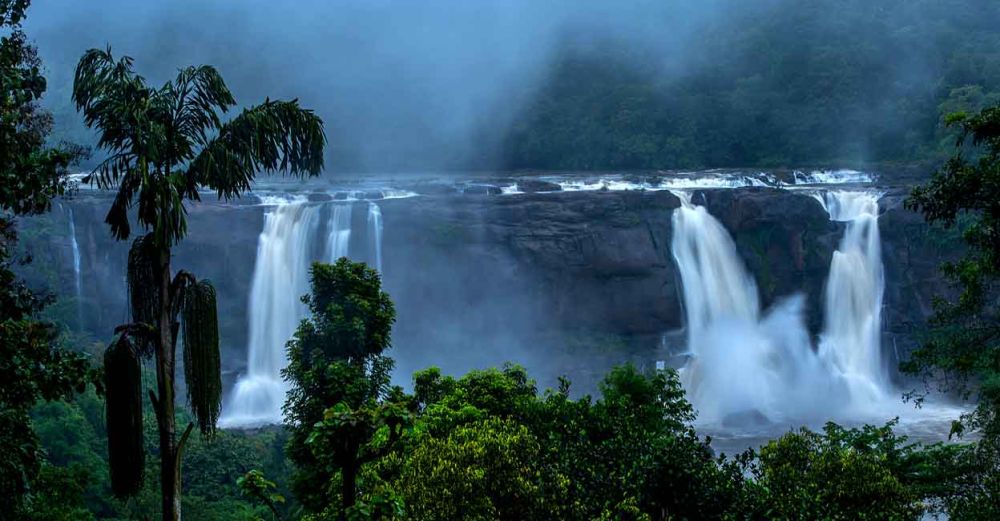

Located in the Thrissur district of Kerala, Athirappilly Waterfalls are often referred to as the "Niagara Falls of India." The falls drop from a height of about 80 feet (24 meters) and span roughly 330 feet (100 meters), making it the largest waterfall in the state and one of the most conspicuous natural wonders in India. The waterfalls and the surrounding areas are known for their stunning scenery and rich biodiversity, which have been attracting visitors from India and around the world for many years.
The history of tourism at Athirappilly Waterfalls is relatively modern, as it closely ties with the broader development of tourism in Kerala. Kerala itself has been a renowned destination due to its unique geography, with this majestic waterfall contributing significantly to the allure of the region.
In the late 20th century, the state government started promoting Kerala as a tourist destination under the campaign "God's Own Country." The drive aimed to showcase various facets of Kerala including its beaches, backwaters, hill stations, and, crucially, the Athirappilly Waterfalls.
Athirappilly has a great cultural significance for the local population, often featuring in local folklore and mythology. However, its rise to fame among tourists can be traced to its cinematic appearances. The falls have provided a backdrop for numerous Indian movies and songs, which has played a significant role in attracting tourists eager to see this filmic icon in person.
As sustainability becomes more important globally, ecotourism has emerged as a major trend in the area. Visitors are increasingly seeking experiences that are both environmentally responsible and culturally authentic. The dense forests surrounding Athirappilly Falls are home to several species of flora and fauna, including elephants, tigers, and exotic bird species, offering intriguing opportunities for wildlife watching and nature walks.
Adventure tourism is also a growing trend, with visitors looking to combine viewing the falls with activities like river rafting, trekking, and mountain climbing in the nearby areas.
The introduction of responsible tourism practices is a recent development to ensure that tourism growth doesn’t adversely affect the natural beauty of Athirappilly. The government has become increasingly aware of the importance of balancing tourism with conservation. Efforts are made to involve local communities in tourism, contributing to local livelihoods while helping to protect the environment.
Technology has influenced the latest tourism trends, with virtual tours and online bookings making it easier for travelers to plan their visits. However, the breathtaking sight of Athirappilly Waterfalls in person is unmatched and continues to be an essential experience for tourists in Kerala.
Athirappilly Waterfalls remains one of Kerala’s foremost tourist attractions, drawing visitors with its natural beauty, opportunities for adventure, and commitment to sustainable practices. As tourism trends evolve, Athirappilly continues to hold its place as a cherished destination for both domestic and international tourists, preserving its splendor for future generations to admire and enjoy.